Betel leave
Botanical name: Piper Betle
a.k.a Betel Pepper
Piper sermentosum syn. Chavia sermentosum
F. Piperaceae

Description
Ingredients
Benefits
Precautions
References:
http://www.instah.com/herbs/health-benefits-of-betel-leaf/
http://herbs.ygoy.com/health-benefits-of-betel-leaves/
http://www.herbsarespecial.com.au/free-herb-information/betel-leaf.html
http://www.nzhealth.net.nz/herbs/coriander.shtml
http://www.tradewindsfruit.com/betel_leaf.htm
http://en.wikipedia.org/wiki/Betel
Botanical name: Piper Betle
a.k.a Betel Pepper
Piper sermentosum syn. Chavia sermentosum
F. Piperaceae

Betel is a leaf of the vine that belongs to Piperaceae family which includes kava and pepper. It is a mild stimulant and has medicinal properties. It is a creeper and is evergreen. It has glossy leaves that are heart-shaped as well as white catkin. It originated from the South as well as South East Asia (Sri Lanka and India).
In Urdu, Bengali and Hindi, the betel leaf is known as Paan. Being a creeper it requires a pole or a compatible tree to grow. Fertile as well a high lands are best for cultivating betel leaves. Saline, waterlogged and alkaline soils are good for growing this plant.
Betel plant is slender and aromatic, which roots at the nodes.
Description
A green leafy vine growing as a ground cover or small climber, very similar in growth habits to pepper. The betel leaf plant is a branching vine (that may climb as high as 10-15ft) although it often grows as an understory ground cover.
Ingredients
- Protein (3.1%)
- Fat (0.8%)
- Minerals (2.3%)
- Fiber (2.3 %)
- Carbohydrates (6.1%)
- Calcium
- Riboflavin
- Carotene
- Niacin
- Thiamine
- Vitamin
- Sugar
- Tannins
- Diastases
- Also contains essential oil
Benefits
- The never-ending list of health properties of betel leaves is about as long and intriguing as the River Ganges. In Ayurvedic medicine (that holistic system of healing that originated in India some 3,000 to 5,000 years ago) the leaves are said to be an aphrodisiac (of course they are) and a breath freshener, which clearly helps in the amorous department
- Beyond the bedroom, betel leaf has been used since ancient times as an aromatic stimulant and anti-flatulent.
- In India, the betel leaf is used as a suppository to cast out worms.
- In Indonesia it is said to rid a warm body of Candida, blemishes and mouth ulcers and is praised for its digestive powers.
- Betel leaf juice is credited with diuretic properties. Its juice, mixed with dilute milk and sweetened slightly, helps in easing urination.
- Betel leaves are beneficial in the treatment of nervous pains, nervous exhaustion and debility. The juice of a few betel leaves, with a teaspoon of honey, will serve as a good tonic. A teaspoon of this can be taken twice a day.
- The betel leaf has analgesic and cooling properties. It can be applied with beneficial results over the painful area to relieve intense headache.
- Consumption of betel leaves instantly relieves Constipation.
- Applied locally, betel leaves are beneficial in the treatment of inflammation such as arthritis.
- Betel leaves can be used to heal wounds. The juice of a few leaves should be extracted and applied on the wound. Then a betel leaf should be wrapped over and bandaged. The wound will heal up with a single application within 2 days.
- The herb is also an effective remedy for boils. A leaf is gently warmed till it gets softened, and is then coated with a layer of castor oil. The oiled leaf is spread over the inflamed part. This leaf has to be replaced, every few hours. After a few applications, the boil will rupture draining all the purulent matter. The application can be made at night and removed in the morning.
- A hot poultice of the leaves or their juice mixed with some bland oil such as refined coconut oil can be applied to the loins with beneficial results in lumbago.
- Betel leaves are beneficial in pulmonary affection in childhood and old age. The leaves, soaked in mustered oil and warmed, may be applied to the chest to relieve cough and difficulty in breathing.
Precautions
Cancer of the mouth and lips has been found to be more frequent in areas where the betel chewing habit is widely prevalent. Other ill-effects of pan-chewing like dyspepsia, cancer of the tongue and cheeks have also been observed amongst excessive chewers.
References:
http://www.instah.com/herbs/health-benefits-of-betel-leaf/
http://herbs.ygoy.com/health-benefits-of-betel-leaves/
http://www.herbsarespecial.com.au/free-herb-information/betel-leaf.html
http://www.nzhealth.net.nz/herbs/coriander.shtml
http://www.tradewindsfruit.com/betel_leaf.htm
http://en.wikipedia.org/wiki/Betel
Labels:
arthritis,
benefits,
betel leaves,
colon cleanser,
diarrhea,
facts,
headache,
herbs,
nervous,
preparation
|


Subscribe to:
Post Comments (Atom)





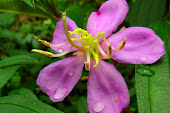





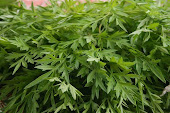
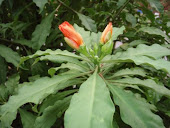
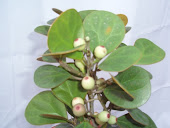



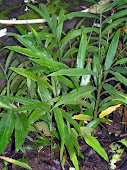
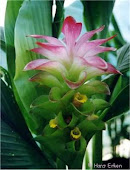

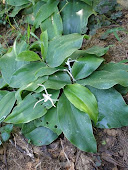
Post a Comment